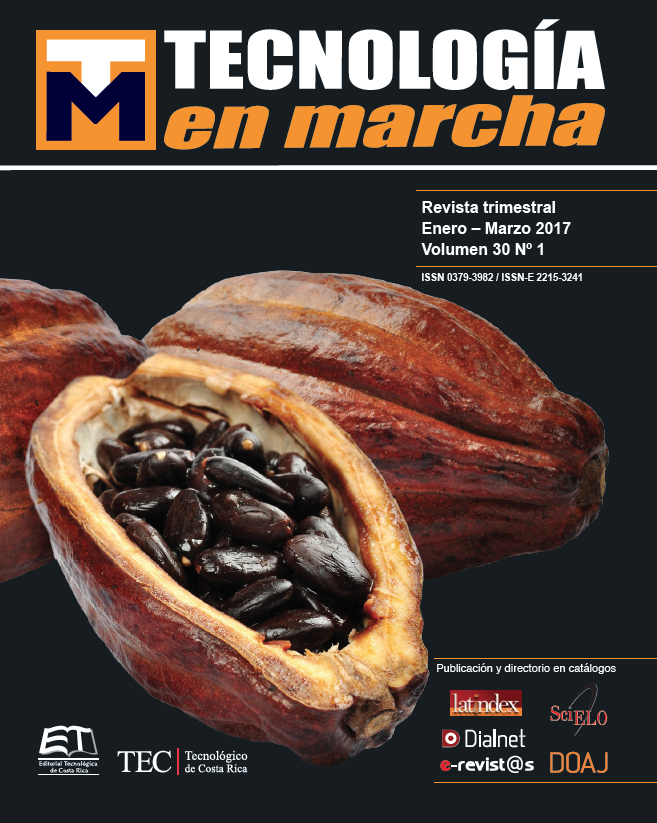Study of the dynamics of cocoa (Theobroma cacao) pollinators in three production systems
Main Article Content
Abstract
This study aims to assess agro-ecological production systems, the dynamics of cocoa pollinating insects and their relationship with crop management and productivity.
Three different production systems (conventional, organic and traditional), located in the province of Limon, Costa Rica, were chosen trying to find contrasts in their agricultural management.
Sampling method was performed using manual aspirators. This technique allowed us to ensure catch insects directly from the flowers.
According to different investigations, in cocoa, pollination is carried out almost exclusively by Diptera Micro Ceratopogonidae family, including Certain species of the genus Forcipomyia that are highly specialized to pollinate the cacao flowers due to the specific characteristics of the morphological structure of the insect. But our results did not show much presence of this family, only two specimens were found in the organic management system. Unlike species of the family Thysanoptera insects were found in greater amounts in each of the three systems. Species from Cecidoniidae and Sciaridae families were also found in the three systems.
The traditional production system was the one that registered the highest number of insects, also recorded the highest numbers of flowers and fruits recorded. The organic production system was the one that registered fewer insects, flowers and fruits.
Article Details
Los autores conservan los derechos de autor y ceden a la revista el derecho de la primera publicación y pueda editarlo, reproducirlo, distribuirlo, exhibirlo y comunicarlo en el país y en el extranjero mediante medios impresos y electrónicos. Asimismo, asumen el compromiso sobre cualquier litigio o reclamación relacionada con derechos de propiedad intelectual, exonerando de responsabilidad a la Editorial Tecnológica de Costa Rica. Además, se establece que los autores pueden realizar otros acuerdos contractuales independientes y adicionales para la distribución no exclusiva de la versión del artículo publicado en esta revista (p. ej., incluirlo en un repositorio institucional o publicarlo en un libro) siempre que indiquen claramente que el trabajo se publicó por primera vez en esta revista.

